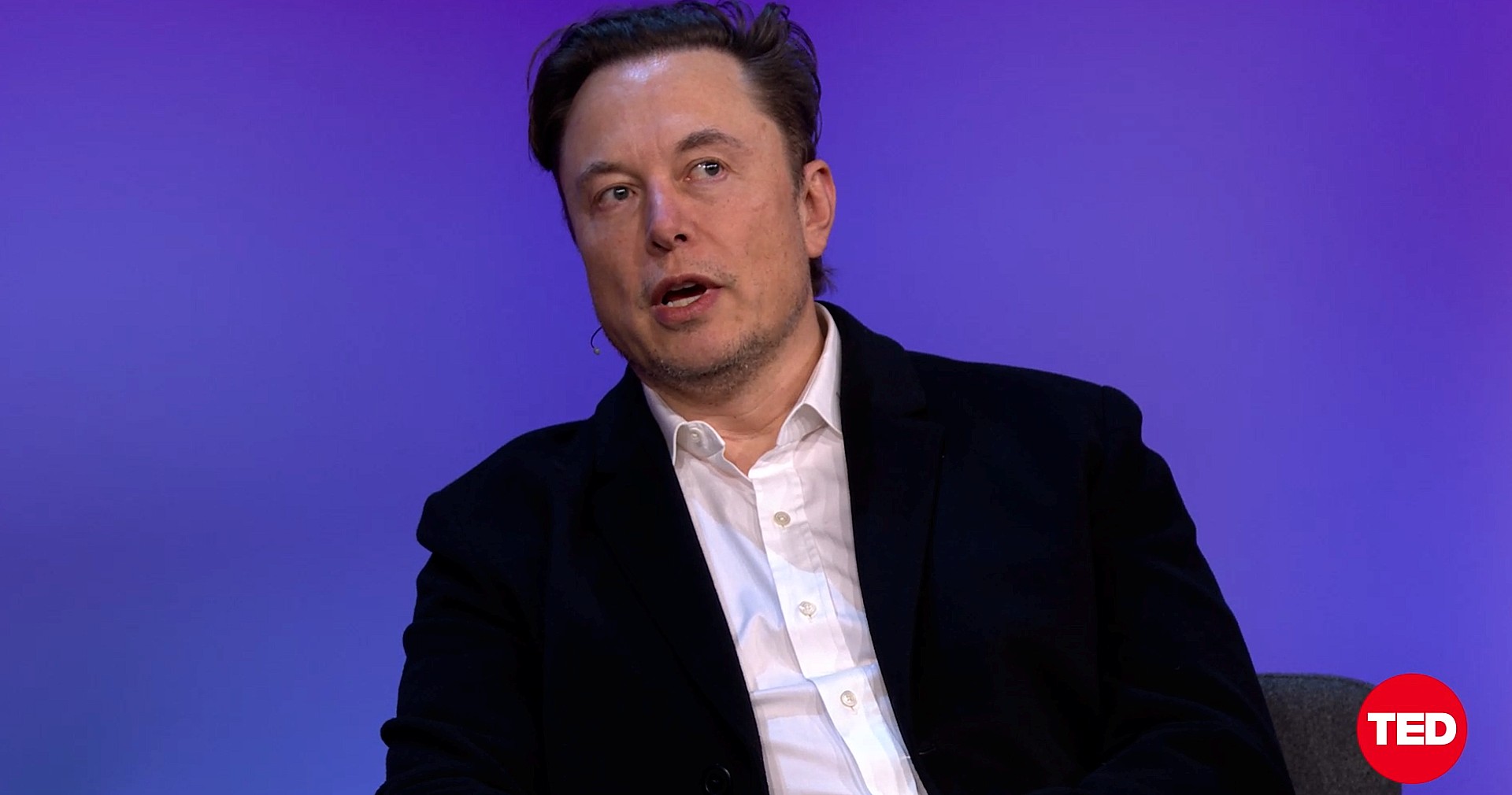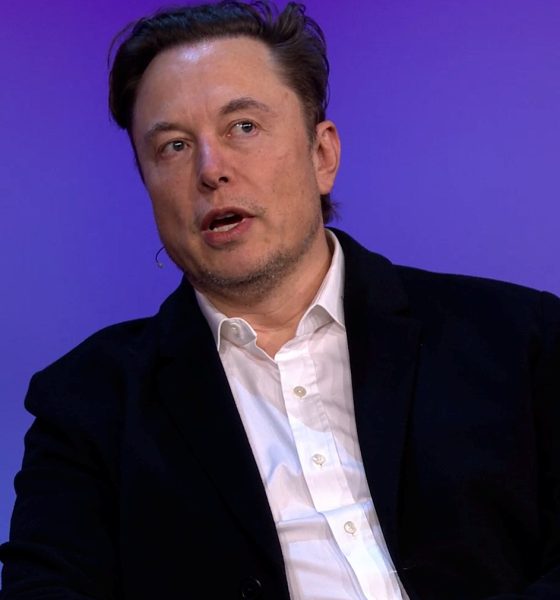

News
Elon Musk talks China’s censorship and his stance on “free speech” vs. “freedom of reach”
Among the more notable criticisms towards Elon Musk as of late involves his ardent stance about free speech on platforms such as Twitter. As per the CEO’s critics, Musk does not seem to be bothered by free speech restrictions at all since Tesla operates a significant portion of its business in China, which is known for its stringent censorship policies.
When he attended the Qatar Economic Forum as a virtual guest, Musk was asked by Bloomberg Editor-In-Chief John Micklethwait if he believed his stance on freedom of speech and his purchase of Twitter — a platform that could be a place of free speech — could potentially get him in trouble with China. Musk noted that he doesn’t think this would be the case.
“Well, Twitter does not operate in China. And I think China does not attempt to interfere with the free speech of the press in the US, as far as I know. Because I assume you’re not under pressure at Bloomberg from China. I don’t think this is going to be an issue,” Musk said.
The Tesla CEO shared some of his ambitious goals for Twitter. Previous reports have hinted that Musk would like Twitter to become a multi-service app similar to China’s WeChat. In his comments at the Qatar Economic Forum, Musk noted that he would like to get about 80% of North America or about 50% of the world on Twitter.
“Ideally, I’d like to get like 80% of North America and perhaps half the world or something ultimately on Twitter in one form or another. And that means it must be something that is appealing to people. It obviously cannot be a place where they feel uncomfortable or harassed, or they’ll simply not use it,” Musk said.
Musk further discussed some specifics about his free speech stance on Twitter. Critics of the CEO have complained recently that Musk does not seem to be a true advocate of free speech since he still blocks people on the social media platform, and his company, SpaceX, also terminated several employees who wrote a critical open letter. Musk explained that there is a difference between “freedom of speech” and “freedom of reach.”
“I think there’s this big difference between freedom of speech and freedom of reach in that one can, obviously, let’s say in the United States go in the middle of Times Square and pretty much yell anything you want. You’ll annoy the people around you, but you’re kind of allowed to just sort of yell whatever you want in a crowded public place, more or less, apart from “this is robbery” — probably that would get you in trouble.
“So but then whatever you say, however controversial, does not need to then be broadcast to the whole country. So I think generally the approach of Twitter should be to let people say what they want to do within the bounds of the law, but then limit who sees that based on any given Twitter user’s preferences. So if your preferences are to see anything, or read anything, then well, you’ll get that.
“But if your preferences are well, you prefer not to see comments that you find offensive in one form or another, then you can have that as a setting and not see it. But I think one way or another, one needs to take the steps that entice most people to want to be on Twitter, and enjoy it and find it informative and entertaining and funny and useful — as useful as possible,” Musk said.
Don’t hesitate to contact us with news tips. Just send a message to simon@teslarati.com to give us a heads up.

News
Tesla FSD fleet is nearing 7 billion total miles, including 2.5 billion city miles
As can be seen on Tesla’s official FSD webpage, vehicles equipped with the system have now navigated over 6.99 billion miles.

Tesla’s Full Self-Driving (Supervised) fleet is closing in on almost 7 billion total miles driven, as per data posted by the company on its official FSD webpage.
These figures hint at the massive scale of data fueling Tesla’s rapid FSD improvements, which have been quite notable as of late.
FSD mileage milestones
As can be seen on Tesla’s official FSD webpage, vehicles equipped with the system have now navigated over 6.99 billion miles. Tesla owner and avid FSD tester Whole Mars Catalog also shared a screenshot indicating that from the nearly 7 billion miles traveled by the FSD fleet, more than 2.5 billion miles were driven inside cities.
City miles are particularly valuable for complex urban scenarios like unprotected turns, pedestrian interactions, and traffic lights. This is also the difference-maker for FSD, as only complex solutions, such as Waymo’s self-driving taxis, operate similarly on inner-city streets. And even then, incidents such as the San Francisco blackouts have proven challenging for sensor-rich vehicles like Waymos.
Tesla’s data edge
Tesla has a number of advantages in the autonomous vehicle sector, one of which is the size of its fleet and the number of vehicles training FSD on real-world roads. Tesla’s nearly 7 billion FSD miles then allow the company to roll out updates that make its vehicles behave like they are being driven by experienced drivers, even if they are operating on their own.
So notable are Tesla’s improvements to FSD that NVIDIA Director of Robotics Jim Fan, after experiencing FSD v14, noted that the system is the first AI that passes what he described as a “Physical Turing Test.”
“Despite knowing exactly how robot learning works, I still find it magical watching the steering wheel turn by itself. First it feels surreal, next it becomes routine. Then, like the smartphone, taking it away actively hurts. This is how humanity gets rewired and glued to god-like technologies,” Fan wrote in a post on X.
News
Tesla starts showing how FSD will change lives in Europe
Local officials tested the system on narrow country roads and were impressed by FSD’s smooth, human-like driving, with some calling the service a game-changer for everyday life in areas that are far from urban centers.

Tesla has launched Europe’s first public shuttle service using Full Self-Driving (Supervised) in the rural Eifelkreis Bitburg-Prüm region of Germany, demonstrating how the technology can restore independence and mobility for people who struggle with limited transport options.
Local officials tested the system on narrow country roads and were impressed by FSD’s smooth, human-like driving, with some calling the service a game-changer for everyday life in areas that are far from urban centers.
Officials see real impact on rural residents
Arzfeld Mayor Johannes Kuhl and District Administrator Andreas Kruppert personally tested the Tesla shuttle service. This allowed them to see just how well FSD navigated winding lanes and rural roads confidently. Kruppert said, “Autonomous driving sounds like science fiction to many, but we simply see here that it works totally well in rural regions too.” Kuhl, for his part, also noted that FSD “feels like a very experienced driver.”
The pilot complements the area’s “Citizen Bus” program, which provides on-demand rides for elderly residents who can no longer drive themselves. Tesla Europe shared a video of a demonstration of the service, highlighting how FSD gives people their freedom back, even in places where public transport is not as prevalent.
What the Ministry for Economic Affairs and Transport says
Rhineland-Palatinate’s Minister Daniela Schmitt supported the project, praising the collaboration that made this “first of its kind in Europe” possible. As per the ministry, the rural rollout for the service shows FSD’s potential beyond major cities, and it delivers tangible benefits like grocery runs, doctor visits, and social connections for isolated residents.
“Reliable and flexible mobility is especially vital in rural areas. With the launch of a shuttle service using self-driving vehicles (FSD supervised) by Tesla in the Eifelkreis Bitburg-Prüm, an innovative pilot project is now getting underway that complements local community bus services. It is the first project of its kind in Europe.
“The result is a real gain for rural mobility: greater accessibility, more flexibility and tangible benefits for everyday life. A strong signal for innovation, cooperation and future-oriented mobility beyond urban centers,” the ministry wrote in a LinkedIn post.
News
Tesla China quietly posts Robotaxi-related job listing
Tesla China is currently seeking a Low Voltage Electrical Engineer to work on circuit board design for the company’s autonomous vehicles.

Tesla has posted a new job listing in Shanghai explicitly tied to its Robotaxi program, fueling speculation that the company is preparing to launch its dedicated autonomous ride-hailing service in China.
As noted in the listing, Tesla China is currently seeking a Low Voltage Electrical Engineer to work on circuit board design for the company’s autonomous vehicles.
Robotaxi-specific role
The listing, which was shared on social media platform X by industry watcher @tslaming, suggested that Tesla China is looking to fill the role urgently. The job listing itself specifically mentions that the person hired for the role will be working on the Low Voltage Hardware team, which would design the circuit boards that would serve as the nervous system of the Robotaxi.
Key tasks for the role, as indicated in the job listing, include collaboration with PCB layout, firmware, mechanical, program management, and validation teams, among other responsibilities. The role is based in Shanghai.
China Robotaxi launch
China represents a massive potential market for robotaxis, with its dense urban centers and supportive policies in select cities. Tesla has limited permission to roll out FSD in the country, though despite this, its vehicles have been hailed as among the best in the market when it comes to autonomous features. So far, at least, it appears that China supports Tesla’s FSD and Robotaxi rollout.
This was hinted at in November, when Tesla brought the Cybercab to the 8th China International Import Expo (CIIE) in Shanghai, marking the first time that the autonomous two-seater was brought to the Asia-Pacific region. The vehicle, despite not having a release date in China, received a significant amount of interest among the event’s attendees.








